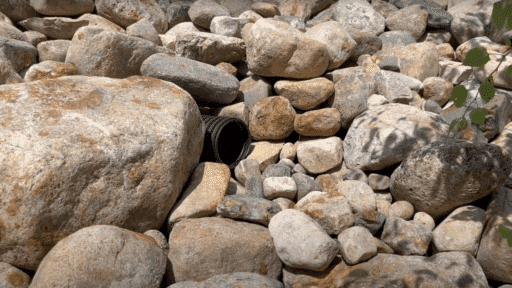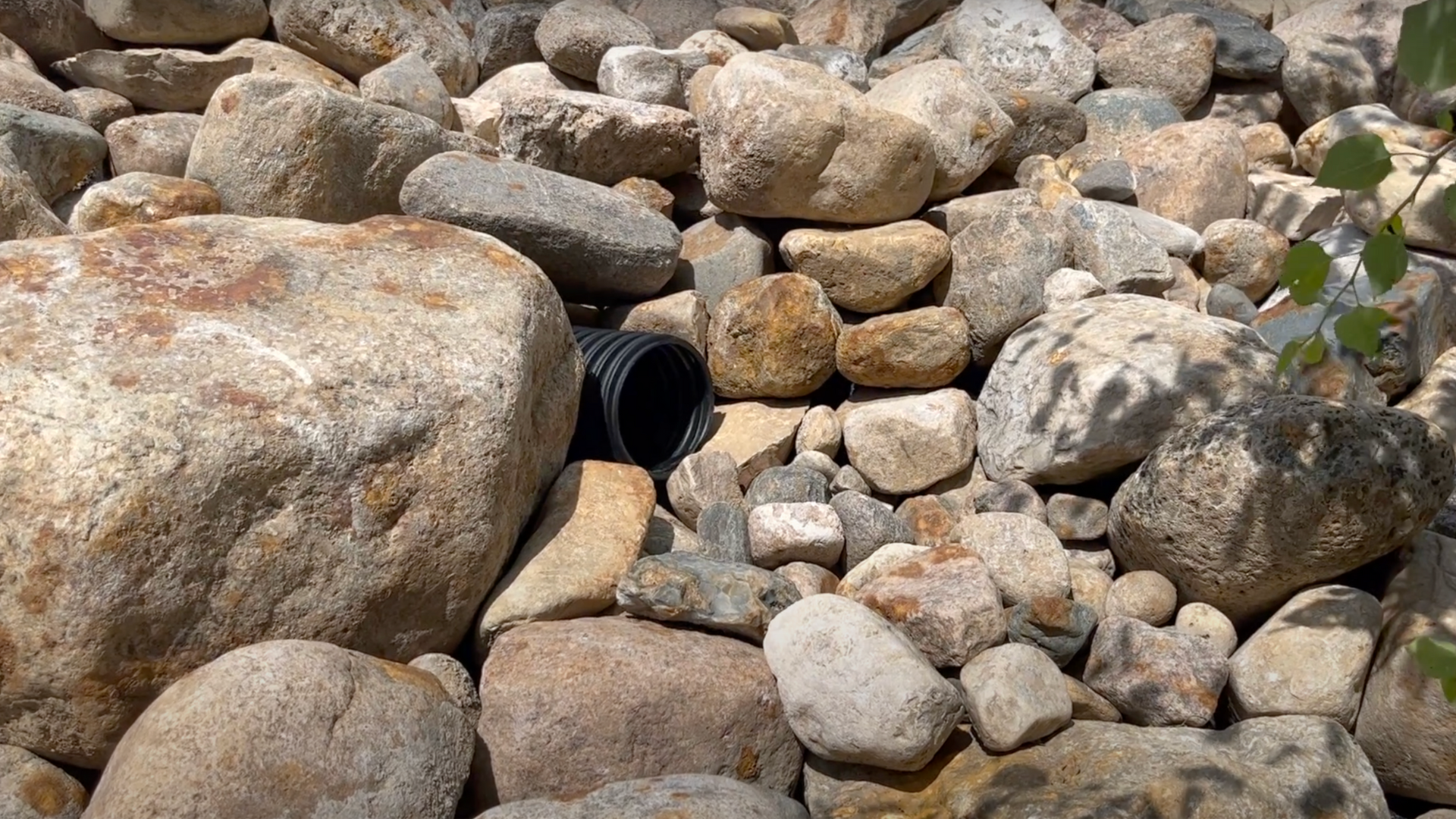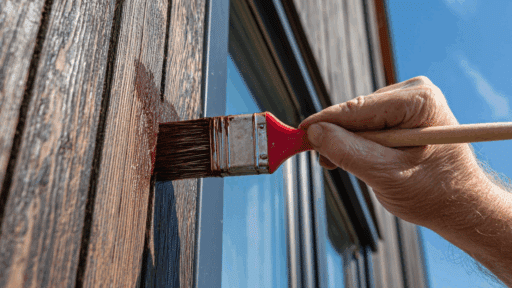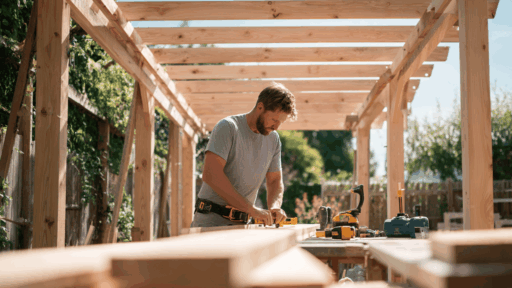Picture this: heavy rain pours down for three days straight. While neighbors worry about flooded basements, you sleep soundly knowing your home is protected.
Water damage costs homeowners thousands annually.
A weeping tile system acts like an umbrella for your foundation, catching water before it becomes problematic and directing it safely away from your home.
This drainage solution works continuously, protecting your most significant investment, rain or shine.
Understanding how weeping tiles work helps you make smart choices about home protection. Let’s break down what you need to know.
What is a Weeping Tile System?
A weeping tile system is a perimeter drainage solution consisting of perforated pipes installed around a building’s foundation. Despite its name, modern weeping tiles are typically made from PVC rather than traditional clay tiles.
The science behind weeping tiles is straightforward: water naturally flows to the lowest point and follows the path of least resistance. By creating a collection point below your foundation level
The system intercepts groundwater and directs it away from your home. This process protects your foundation from hydrostatic pressure, which can cause cracks, leaks, and structural damage over time.
Weeping tile systems are essential for both residential and commercial buildings, particularly in areas with high water tables, clay soils, or regions that experience significant rainfall or snowmelt.
Step-by-Step Weeping Tile Installation Process
The installation of a weeping tile system follows a systematic approach that requires precision and attention to detail at each stage.
Understanding these sequential steps helps homeowners appreciate the complexity of the work and ensure their contractor follows proper procedures.
Step 1. Excavation
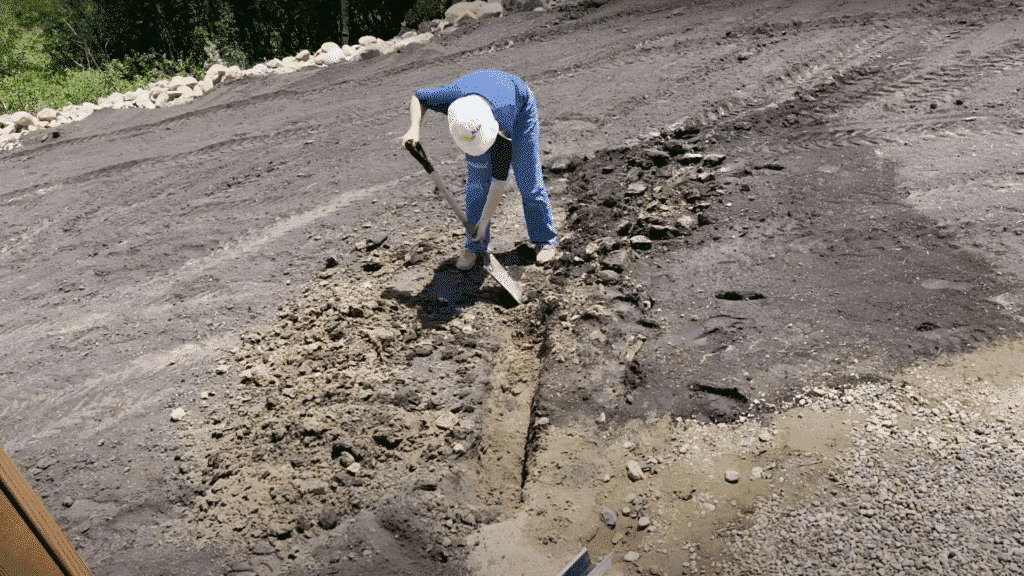
The installation begins with careful excavation around the perimeter of the foundation. Key considerations for this phase include:
- Depth and width – Dig to foundation footing level (6-8 feet deep). The trench width should be 2-3 feet to ensure adequate workspace.
- Slope maintenance – Maintain a consistent 1% grade (1 inch drop per 8 feet) for proper water flow. Utilize laser levels and surveying equipment to ensure accurate slope measurements.
- Safety Measures – Call for utility marking before commencing work. Protect nearby landscaping, structures, and respect property lines during excavation.
Step 2. Gravel Bed Preparation
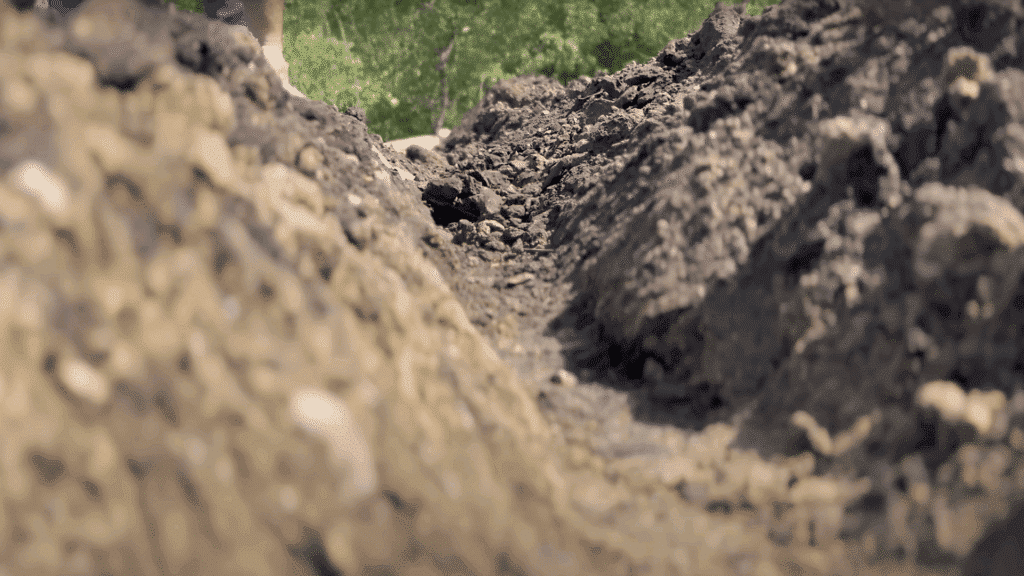
Once excavation is complete, a layer of clean, washed gravel forms the foundation of your drainage system. This gravel bed serves multiple purposes:
- System foundation – Provides a stable pipe base and allows free water flow while preventing soil particles from clogging the drainage network.
- Material specifications – Use 3/4 inch to 1.5-inch diameter gravel. Avoid sand or fine gravel that impedes drainage. Apply a 4-6 inch thick layer, properly leveled to maintain the required slope.
- Gravel type selection – Clean, angular gravel outperforms rounded river rock due to irregular shapes creating more void space for water movement and improved drainage capacity.
Step 3. Pipe Installation
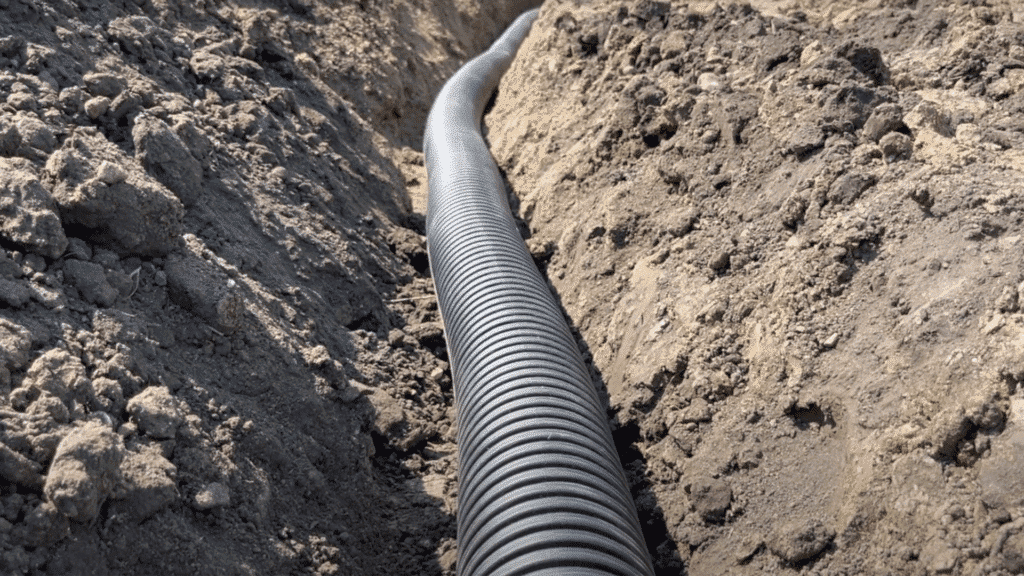
The heart of the weeping tile system is the perforated drainage pipe. Modern installations use 4-inch or 6-inch diameter PVC pipe with holes or slots along its length. Proper pipe installation requires attention to several critical details:
- Perforation orientation – Install perforations facing downward for water entry while preventing debris infiltration.
- Filter fabric protection – Wrap pipe in geotextile fabric to allow water flow while blocking soil particles.
- Connection requirements – Use sealed PVC fittings, maintain a consistent slope, and install cleanouts every 100 feet and at direction changes.
Step 4. Backfilling Process
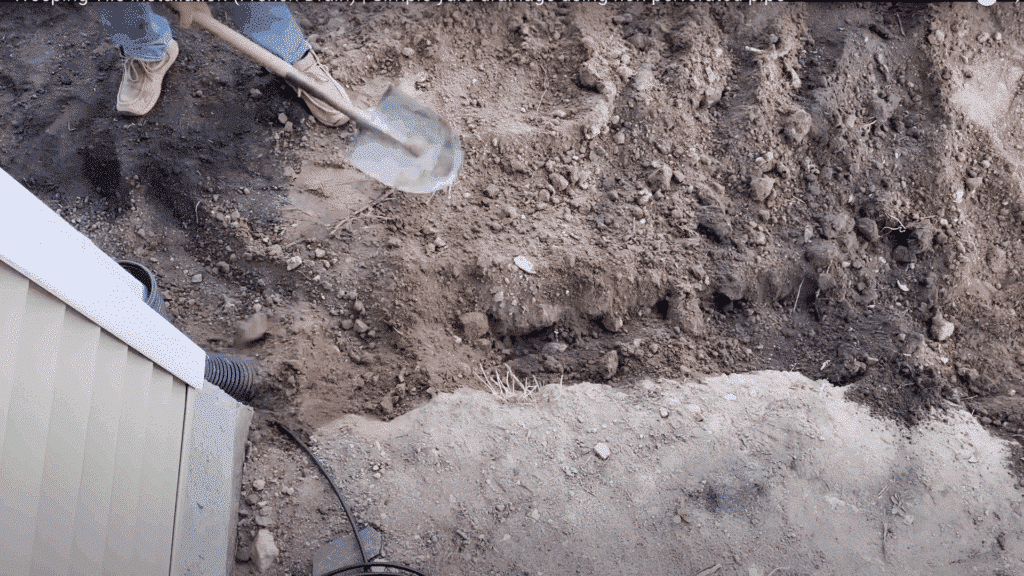
After pipe installation, the backfilling process begins with careful material placement:
- Gravel envelope – Surround pipe with clean gravel, extending 6-12 inches above pipe level.
- Soil replacement – Backfill with original soil or granular fill in 8-12 inch compacted lifts.
- Compaction balance – Compact to prevent settling while preserving water infiltration above the system.
Step 5. Discharge Connection

The weeping tile system must connect to an appropriate discharge location to function effectively:
- Discharge options – Include sump pump systems, gravity drains to storm sewers, or daylight discharge to lower property elevations.
- System types – Sump pumps are needed when the discharge point is higher than the weeping tile level. Gravity systems work when natural topography allows water to flow away from the foundation.
- Location requirements – Discharge point must prevent water return to the foundation area. Local regulations specify minimum distances from property lines, wells, and septic systems.
Key Considerations for Successful Installation
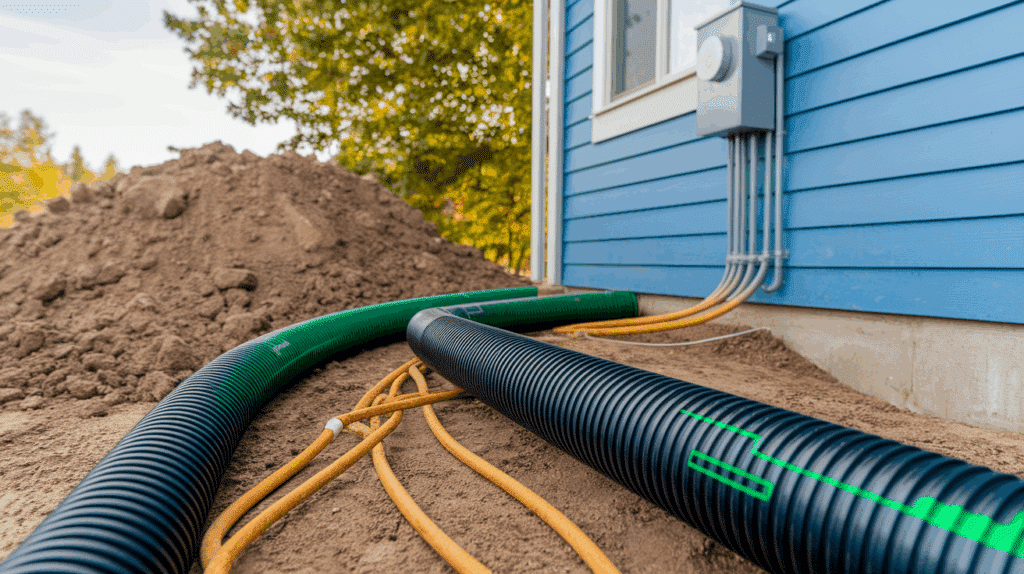
Installing a weeping tile system involves numerous technical factors that determine long-term performance and reliability.
Making informed decisions about these critical elements can mean the difference between a system that protects your home for decades and one that fails prematurely.
Understanding these key considerations helps homeowners plan effectively and avoid costly mistakes during the installation process.
Professional Installation Benefits
Professional contractors bring expertise in soil conditions, local building codes, and proper installation techniques, ensuring long-term system reliability.
They can identify potential problems before they occur and provide insurance protection and warranties.
Foundation Preparation
Foundation waterproofing often accompanies the installation of weeping tile, including the use of waterproof membranes and foundation coatings. Proper preparation also includes grading improvements to direct surface water away from the foundation.
Regulatory Compliance
Permit requirements vary by location, but are often necessary for excavation work near foundations. Professional contractors typically handle permit applications and ensure code compliance throughout the installation process.
Material Quality and Selection
Long-term system performance depends heavily on the quality of the materials used. PVC pipes should meet relevant standards for strength and durability, while gravel must be clean, washed, and free from fines and organic matter.
Filter fabric should be specified for subsurface drainage applications rather than standard landscape fabric.
Common Problems and Solutions
Even properly installed weeping tile systems can experience problems over time.
- Clogging issues – Most frequent problem caused by soil infiltration, root intrusion, or debris accumulation
- Slope problems – Improper slope causes water pooling instead of proper flow to the discharge point
- Pipe damage – Settling or root intrusion can compromise system performance
Maintenance prevention – Regular cleanout flushing prevents many common problems
Maintenance and Long-term Care
Weeping tile systems require minimal maintenance when properly installed, but regular attention ensures continued performance.
Annual inspection of visible components helps identify problems early, while professional maintenance every 3-5 years may include video inspection and performance testing.
Cost Considerations and Return on Investment
| Cost Factor | Range | Details |
|---|---|---|
| Installation Cost | $8,000 – $15,000 | Based on average home size (1,200-2,000 sq ft) |
| Per Linear Foot | $40 – $85 | Varies by soil conditions and accessibility |
| Foundation Repair | $10,000 – $25,000 | Costs avoided with proper drainage |
| Basement Flood Damage | $5,000 – $20,000 | Average cleanup and restoration costs |
| Insurance Discounts | 5% – 15% | Annual premium reduction potential |
| Property Value Increase | $5,000 – $12,000 | Added home value with a professional system |
| System Lifespan | 20 – 30 years | With proper maintenance and quality installation |
Video Tutorial
Thanks to the YouTube channel Paige does Projects for their informative video.
Final Thoughts
Weeping tile installation offers vital foundation and basement protection through careful planning.
Though the upfront cost appears significant, protection against water damage makes weeping tile systems among the most worthwhile home improvements available.
Success requires proper installation methods, high-quality materials, and adherence to local code compliance. Professional installation ensures optimal performance and provides warranties protecting your investment.
With proper installation and maintenance, weeping tile systems provide reliable foundation protection and confidence for years to come.
Ready to protect your home’s foundation? Contact certified waterproofing experts today for a free consultation and quote on professional weeping tile installation.

